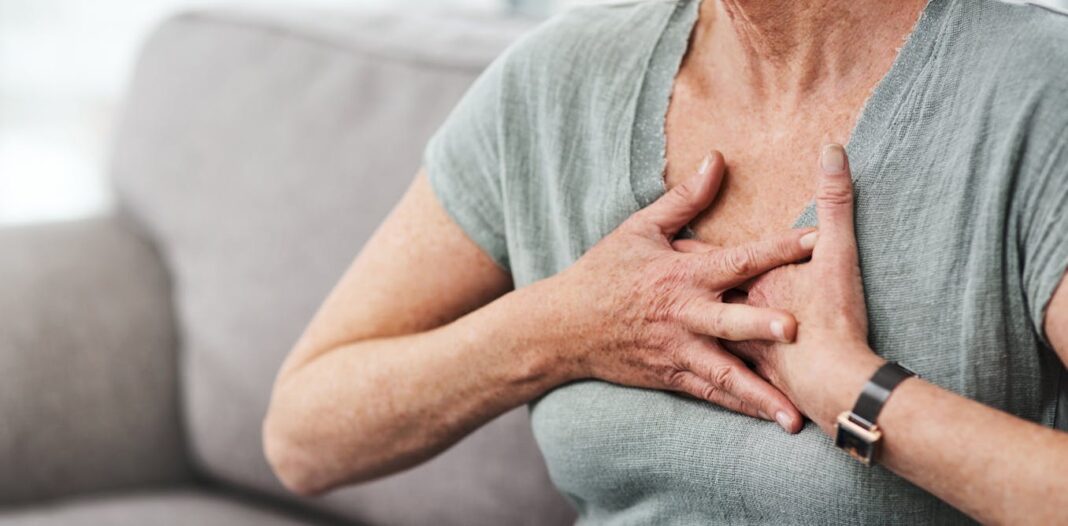The Many Faces of Intimate Partner Violence and Its Impact on Women’s Cardiovascular Health
Intimate partner violence (IPV) is a global gendered epidemic that inordinately impacts females. Worldwide, 25-50 per cent of women report abuse in a personal relationship and two out of three victims of IPV are female.
Although both women and men experience abuse at the hands of their partners, women disproportionately experience more severe abuse and women and girls are more likely to be killed by an intimate partner than any other member of society.
The many faces of IPV
There are multiple forms of IPV, including sexual, psychological, financial and physical abuse. Injuries associated with physical violence and the mental health consequences of abuse are generally known. Women commonly report physical symptoms including chronic pain, sleep disorders and gastrointestinal issues. These health consequences linger after abuse has ended, and may not become apparent until years later.
Among the common but lesser-known consequences of IPV is a heightened risk for cardiovascular disease.
Cardiovascular disease is a leading cause of death for males and females. Abuse survivors of both sexes have increased rates of cardiovascular disease, but the increase is higher in women.
Despite the connection between IPV and cardiovascular disease in women, this link is not well known, even among health-care professionals.
Factors driving heart risks in IPV survivors
Common mental health issues in survivors of abuse — including depression, anxiety and PTSD — are known risk factors for cardiovascular disease. However, these conditions are linked to cardiovascular disease in women and men, whereas many of the cardiovascular consequences of IPV are specifically linked to women. Emerging data suggests the biological response to mental health stressors may be more pronounced in women, a possible explanation for gender disparities in cardiovascular disease following abuse.
Pain is also a stimulus for cardiovascular disease: individuals with chronic pain have rates of cardiovascular disease nearly double the average. IPV is a leading cause of physical injury for women and women who experience violence have twice the risk of chronic pain than those who do not.
Women at risk
While any of these consequences of IPV could explain an increase in cardiovascular disease rates and mortality, they need not work in isolation. Mental health conditions, including anxiety, depression and PTSD, increase pain sensitivity which could exacerbate heightened sensitivity to pain in women.
Inequities in medical treatment may also contribute to the higher rates of cardiovascular disease mortality in women who experience abuse. Sign and symptoms of cardiovascular disease may be dismissed or wrongly attributed by both patients and physicians. More than half of women are unaware of their risk for cardiovascular disease which may result in them dismissing symptoms or attributing symptoms to non-cardiovascular issues.
A call to action
Identifying cardiovascular risks faced by victims of abuse is an important step in solving this emerging crisis. Partnerships between social scientists and health-care professionals are critical to creating a team that identifies women at risk; develops strategies to educate victims and practitioners on risks; and implements treatments and interventions to reduce the adverse health consequences of IPV, while considering the victim’s life circumstances.
Conclusion
The lack of information on the link between cardiovascular health and IPV is reflective of the overall knowledge gap in women’s health. Cardiovascular disease is a leading cause of death for men and women, and yet most research continues to focus on male laboratory animals and patients. The focus of research on males is concerning because cardiovascular disease is profoundly different between females and males. Investments in women’s health research like the National Women’s Health Research Initiative in Canada are critical to support basic science research needed to understand the mechanisms of risk and the unique pathology in women.
FAQs
Q: What is intimate partner violence (IPV)?
A: IPV is a form of violence that occurs between intimate partners, including physical, sexual, psychological, and financial abuse.
Q: How common is IPV?
A: Worldwide, 25-50 per cent of women report abuse in a personal relationship and two out of three victims of IPV are female.
Q: What are the consequences of IPV on women’s cardiovascular health?
A: IPV has been linked to a heightened risk for cardiovascular disease, including increased rates of chronic pain, sleep disorders, and gastrointestinal issues.
Q: Why is the connection between IPV and cardiovascular disease not well known?
A: The connection between IPV and cardiovascular disease is not well known, even among health-care professionals, due to a lack of research and investment in women’s health research.
Q: What can be done to address the issue of IPV and its impact on women’s cardiovascular health?
A: Partnerships between social scientists and health-care professionals are critical to creating a team that identifies women at risk; develops strategies to educate victims and practitioners on risks; and implements treatments and interventions to reduce the adverse health consequences of IPV, while considering the victim’s life circumstances.




